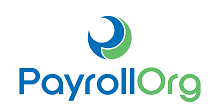The IRS released cost-of-living adjustments (COLAs) for 2025 reflecting any increases in the flexible spending arrangements (FSA) deferral limit and excludable transportation fringes, among other changes [Rev. Proc. 2024-40, 10-22-24].
Qualified transportation fringes
The amounts that may be excluded from gross income for employer-provided qualified transportation fringe benefits (transportation in a commuter highway vehicle and any transit pass) and qualified parking for 2025 increase to $325 ($315 in 2024).
Health FSAs
For plan years beginning in 2025, the dollar limitation under IRC §125(i) on voluntary employee salary reductions for contributions to health FSAs increases to $3,300 ($3,200 in 2024). For cafeteria plans that permit the carryover of unused amounts, the maximum carryover amount increases to $660 ($640 in 2024).
Standard deduction
The standard deduction amounts for 2025 increase to $30,000 for married couples filing jointly or surviving spouses ($29,200 in 2024), $15,000 for single taxpayers and married taxpayers filing separately ($14,600 in 2024), and $22,500 for heads of household ($21,900 in 2024).
Federal tax levies
The Tax Cuts and Jobs Act altered the way the amount of wages, salary, or other income exempt from a federal tax levy is calculated. For taxable years beginning in 2025, the dollar amount used to calculate the amount determined under IRC §6334(d)(4)(B) increases to $5,100 ($5,000 in 2024).
Foreign earned income exclusion
For 2025, the maximum foreign earned income exclusion amount under IRC §911(b)(2)(D)(i) is $130,000 (up from $126,500 in 2024). The maximum amount of the foreign housing cost exclusion is $18,200 (up from $17,710 in 2024).
Medical Savings Accounts
To be eligible to make contributions to a Medical Savings Account (or to have the employer make the contributions), an employee must be covered by a high deductible health plan. For 2025, a high deductible health plan is a plan with an annual deductible of $2,850-$4,300 for individual coverage (up from $2,800-$4,150 in 2024) and $5,700-$8,550 for family coverage (up from $5,550-$8,350 in 2024).
Maximum out-of-pocket expenses can be no more than $5,700 for individual coverage (up from $5,550 in 2024) and $10,500 for family coverage (up from $10,200 in 2024).
Adoption assistance
For 2025, the maximum amount that can be excluded from an employee's gross income for qualified adoption expenses under an employer's adoption assistance program or in connection with the adoption of a child with special needs is $17,280 (up from $16,810 in 2024).
The amount excludable from an employee's gross income begins to phase out for taxpayers with adjusted gross income of $259,190 (up from $252,150 in 2024) and is completely phased out for taxpayers with adjusted gross income of $299,190 (up from $292,150 in 2024).
Qualified small employer HRA
For 2025, a qualified small employer health reimbursement arrangement (QSEHRA) is an arrangement which, among other requirements, makes payments and reimbursements for qualifying medical care expenses of an eligible employee that do not exceed $6,350 (up from $6,150 for 2024), or $12,800 in the case of an arrangement that also provides for payments or reimbursements for family members of the employee (up from $12,450 for 2024).
Compliance
